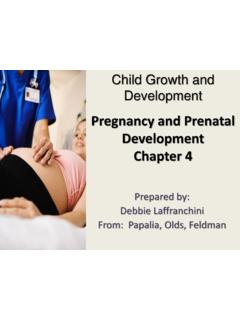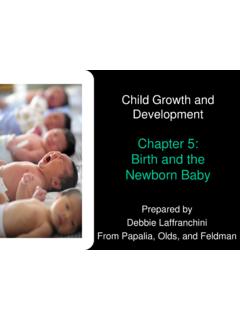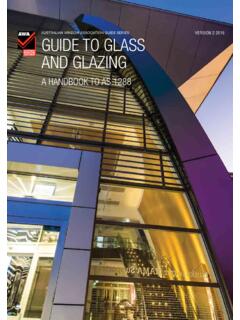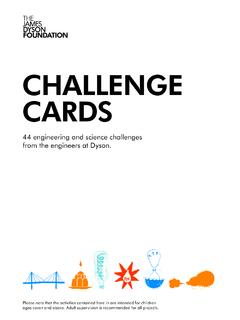Transcription of 5. OBSERVING, RECORDING, AND REPORTING …
1 , RECORDING, ANDREPORTINGCHILDREN'SDEVELOP MENTO bservingandRecordingHowdoteachersknowif thematerialsintheactivitycentersareofint eresttochildren?Howdotheyknowif theactivitiesaremeetingtheneedsofchildre n?Howcanteachersshareinformationwithpare ntsina waythataccuratelydescribeshowtheirchildr enarespendingtheirtime?Howdoteachersdocu menta concernthattheyhaveabouta child'sbehavior?Howdoteachersindividuali zeanactivity?Thesearesomeofthequestionst hatteachersshouldaskthemselvesastheyplan activities,adapttheenvironment, ,classroom, , ~a ' bigsmilemightbetheonlyindicationwehaveth ata ,Childrencommunicatewithusthroughtheirey es,thequalityoftheirvoices,theirbodypost ures,theirgestures,theirmannerisms,their smiles,theirjumpingupanddown, ,bythewaytheydothings,aswellasbywhatthey do,whatis 'sbehaviorthroughtheeyesofitsmeaning99 OBSERVING, RECORDING, andReportingChildren 'sDevelopmenttothem,fromtheinsideout, (CohenandStem,1974, ).
2 Byrecordingtheirobservations,teachersdoc umentchildren' ,observationsofthechildcanrevealpatterns ofbehavior,learningpreferences,masteryof skills, , ,however,todescribeaccuratelythebehavior stheyrecord, ;rather, :"Jopickeduptheblockandthrewit atSamuel,"or,"Mariespenthertimeoutdoorss ittingunderthetree."Subjectiveobservatio nsarelabels,judgments,orinformationrecor dedoutofcontext:"Jois aggressive"or,"Marieis lazy."Labelsdonotconveyinformationthathe lpsinunderstandinga child' ,record-ing"Adamchosetobuildwithblocksin theblockarea," doesnotprovideasmuchinformationasthefoll owing,morecomplete,anecdotalobservation: "AssoonasAdamcameintotheclassroom,heanno uncedtohisfriends,MicaandSol,thathewante dto'buildthebiggesthouseinthecity.' sign100 OBSERVING, RECORDING, andReportingChildren 'sDevelopmentforhishouse,whichI ,'TheBigHouse.
3 'Adamstayedintheblockcenterforfiftyminut es." ,sharedhisideas, )',hesustainedattentionfora long, , ,whenit happened,whereithappened,thestimulusfort heactivity,thechild'sreactions, ' ,examin-101 OBSERVING, RECORDING, andReportingChildren ' , 'snoserunningorstuffed?Doesthechildseemf lushedorfeverish?Is therea rash?Anybruisesorlacerations?Areeyestear fulorrunning?Is thechildscratchingherhead?Isthechildhear ingwell,ormighthisearsbefilledwithfluid? Isthechildlimping?Doesthechildhavediarrh ea?If thechildis unwell,theteachershouldlettheparentsknow immediatelyandkeepthechildquietandawayfr omotherchildrenif , child' ,expressiveandreceptivelanguage,intellec tual,social-emotional, developmentalchecklist,ObservationCheckl istforTeachers, recordofwhatlearningcentersthechildrench oose, ,forexample, favoriteartactivityinanotherpartoftheroo m,suchaspaintingcloudsandtheskyfora teacherkeeptrackofthenumberoftimesa specifiedtime("Suehitanotherchildfivetim esduringoutdoorplaytoday,")orthelengthof timea behaviorlasted("Thomascriedforeightminut eswhenhewasaskedtowashupforlunch.
4 ")Theserecordscanbeusedtohelpa childreduceordiminisha ,iftheteacherdiscoversthatThomascrieswhe nevertherearetransitionsfromoneactivityt othenext, effectiveonlyif thebehavioris , RECORDING, andReportingChildren'sDevelop mentPortfoliosorWorkSamplesThesearecolle ctionsofworkthata ,dictatedstories,attemptsatwritingwordsa ndnumbers,andlanguagesamples,whicharetra nscriptionsoftheex-actwordsa childusestoexpressa ,a seriesofphotographscanprovidea child' andwhatit ' ,ideas,andworkwithadultsif teachertakestimetolistentoa childdescribeanartprojectortalkabouta favoritecousin,it ,suchas"Whyarecloudsinthesky?"or"Howdoes anairplanefly?"provideinsightintotheleve lofthechild' ,suchas,"Howarebirdsandairplanesalike?" tolearnmoreabouta child' ,writing,andspeaking, childwhoanswersthequestion"Howdoyouknowh owtoreadwords?
5 "with"Wordsarereallylotsoflettersthateac hhavea sound,andyoumoveyourtongueandlipsinfunny waystomakethesounds,"maybereadyforrhymes andbookswitha "Wordsarelikepicturesthatgrown-upsknow," ,playwithlettersandnumbersina moreconcreteway, ,where, , , RECORDING, andReportingChildren'sDevelop mentRecordingTechniquesandToolsTeachersu sea tokeepa padofpaperandpencilina pocketatalltimestocatcha ,theseshortnotesaretranscribedingreaterd etailintoa , a teacherwantstoobservegrossmotordevelopme nt,shecansetupanobstaclecourseoutsideand usea developmentalchecklisttorecordtheskillso fallthechildr~astheyplayonthebalancebeam ,climbstairs, , recording , is :FamilyCultureandDiversityThemostsalient characteristicofeachfamilyis , ,suchasdietarypreferences(porkmaybeprohi bited),religiouspractices(Hanukkahcanbec elebratedalongwithChristmas),language(th echildmayspeaka differentlanguageathome),andtime(somecul turesviewtimeasflexible).
6 Teacherswillalsohavea , RECORDING, andReportingChildren'sDevelop mentSomefamiliespreferthatchildrenbe"see nandnotheard," ~ ,mostfiveyearoldchildrencanconcentratelo nger,communicatemoreeffectively,engagein moreinteractivepla~ animportantfactorwhende-terminingwhatact ivitiestoprovide,howtoprovidethem,andfor howlong.(SeeDevelopmentalGuidelinesinCha pter2).DevelopmentalLevelWithinanygroupo fthree-year-oldchildren, ; ,thedevelopmentofchildrenisoftenuneven:a childmaybeadvancedinlanguageandcommunica tion, thereareparticularlygiftedordevelopmenta llydelayedchildrenintheclass, is,therefore,notenoughtoconsiderchronolo gicalagealone;toindividualizeeachlearnin gstrategy,theteachermustalsoconsiderthec hild' a : Serious/Lighthearted Energetic/Calm Extroverted/Introverted Curious/Indifferent Easygoing/Intense Fastidious/Messy Risk-taker/Cautious , , RECORDING, andReportingChildren'sDevelop mentTolearnwellsomechildrenneedtotalkand interactwithothers, ,forexample, , ,suchasboysengaginginloud,physical,rough -and-tumbleplayandgirlspreferringlanguag e-based,social, is naturaltoallowchildrentoselectplaymatesa ndactivities,evenif notnecessarilyanindicationofintelligence , , childhasa ~tactile, , childis , ,othersbydinosaurs,a certainsport,ora , ,soit is , RECORDING, andReportingChildren'sDevelop mentStrengthsandNeedsAllchildrenhavestre ngths(whattheydoparticularlywell)andneed s(whattheyrequirehelpwithtodobetter).
7 ,whichareoftenthesame, , ,thenhashermixthepaintsusinga , ,howrealis-ticallytheyknowtheirownstreng thsandneeds,andhowtheyjudgetheirownabili tytoundertakea ,othersasextremelyca-pable, ,oroveresti-matingone'sabilitytoaccompli sha taskisjustasproblematicasa realisticsenseofthemselvesandteachthemto identifyresourcestosolveproblems(animpor tantpartofself-efficacy)if theyareabletodetermineaccuratelythata particulartaskis toodifficultfora : Howa childrespondstoroutines. Howa childmanagestransitions,quietandactivepe riods, ,duringmealtimes,usingthetoilet,dressing ,washing, , RECORDING, andReportingChildren'sDevelop ment (Isthebrushheldsecurely?),thevarietyofma terials(Doesthechildusealltheartsupplies oronlythepaintsat theeasel?),theimaginativeuse(Doesthechil dinventnewwaystousethesmallblocksoralway sstackthem?)
8 ,skilllevel(Howmanypiecesareinthepuzzles heputstogether?),andconceptunder-standin g(Howcomplexisthemathematicalthinkingtha tisdemonstratedasthechildusesattributebl ocks?). Howa Howa lotofattentionordirection?Doesthechildas kforconstantpraise?Doesthechildenjoytalk ingwiththeteacher?Doesthechildspendtimew ithadultvisitorsintheclassroom? Howa hisvocabulary? Howa ,run,skip,jump?Howis hisbalance?Is sheabletocatchandthrow?Is hesureortentativeinhismovements?Doesheen joysoccer,kickball,dance,andmovementacti vities? sheabletoexpressherfeelings108 OBSERVING, RECORDING, andReportingChildren 'sDevelopmentverbally?Canhenegotiatewith childrenandadults?Isheeasilyfrustrated? Therolesthechildtakeswithinthegroup(fore xample,leader,follower,listener,talker). Teachers'observations,assessmentdata, togatherinformationthatwillenabletheteac hertostructureclassroomexperiencestobett ermeetthechild'.
9 BuildingonInterestsFora childwhois reluctanttotakerisksbyexpandingherrepert oireofactivities,theteachercanexpandafam iliaractivitybyintegratinga ,paper,andtapetotheblockareaandasksTalto makea trafficsignora "DoNotDisturb" isdifficulttohearherina friendandasksthatthepuppetsyellouta refrainina childwhodoesnotgraspa conceptwithanotherchildwhohasrecentlymas teredit ,a childwhohasnotmasteredone-to-onecorrespo ndencewatchesashisfrienddemonstratesand" teaches" , ,whenchildrenplaywithpuzzles, ,theteachercanaskonechildtoperforma hardertasksuchashoppingononefoot, , RECORDING, andReportingChildren'sDevelop mentTargetingSpecificNeedsA teachermayprovideopportunitiesfora childtopracticemasteringa a teacherhasobservedthatseveralchildrenhav edifficultyusingscissors,shemayplanactiv itiesthatusesmallmuscles,suchasfishingfo robjectswithtongsorplacingpegsina board,thenmovetotearingpaperand,finall)' , )',a teachermayfinda worrisomepatternofbehaviorthatdoesnotsee mtoimprove, , physician,psychologist, discipline,suchasa specialeducator,psychologist,speechandla nguagepathologist, ,andwithsupportfromteachersandparents,ch ildrenwithdisabilitiescanthriveina classroomthatvalueseachchild' , ' 'sdisabilityaswellasspecifictechniquesth atcanbeusedtomeettheirchild' ' , RECORDING, andReportingChildren'sDevelop mentWithparentalpermission,specialistssu chasspeechorphysicaltherapistscanobserve a childwitha disabilityina ,adaptions,andmodificationswillhelpteach ersmeetthevariedneedsofchildrenwithdisab ilities: PhysicalDisabilitiesTheclassroommayhavet obemodifiedtoaccommodatea ;aneaselcanberaised.
10 A watertableputonblocks;bolstersmayhelpa childsitorlayina ;usetapetocreatea bettergriponpaintbrushes;havepuzzleswith knobsonthepiecesforeasyremoval;useadapti veutensilsif available. , HearingImpairmentsIfthechildusessignlang uage, ,photos, ' LowVisionorBlindnessUsematerialsthatappe altomanysenses:forexample,usesandpaperle ttersandnumbers, 's111 OBSERVING, RECORDING, andReportingChildren ' belltogetthechildren' , quietareaoftheroomthatthechildcanuseforw orkthatrequiresconcentrationorfora placetorest. ,stuffedanimals, ,therearetimeswhena conferenceisusuallytoallowteacherstodisc ussthechild'sprogressandgivetheparentsan opportunitytosharetheirobservations,idea s, , RECORDING, andReportingChildren'sDevelop mentbesetforchildren,andparentscanprovid einformationonstrategiestheyuseeffective lyat , RECORDING, andReportingChildren'sDevelop mentGuidelinesforSuccessfulParentlTeache rConferences Scheduleconferencesata ,askforit specificallyandgiveanexample.










